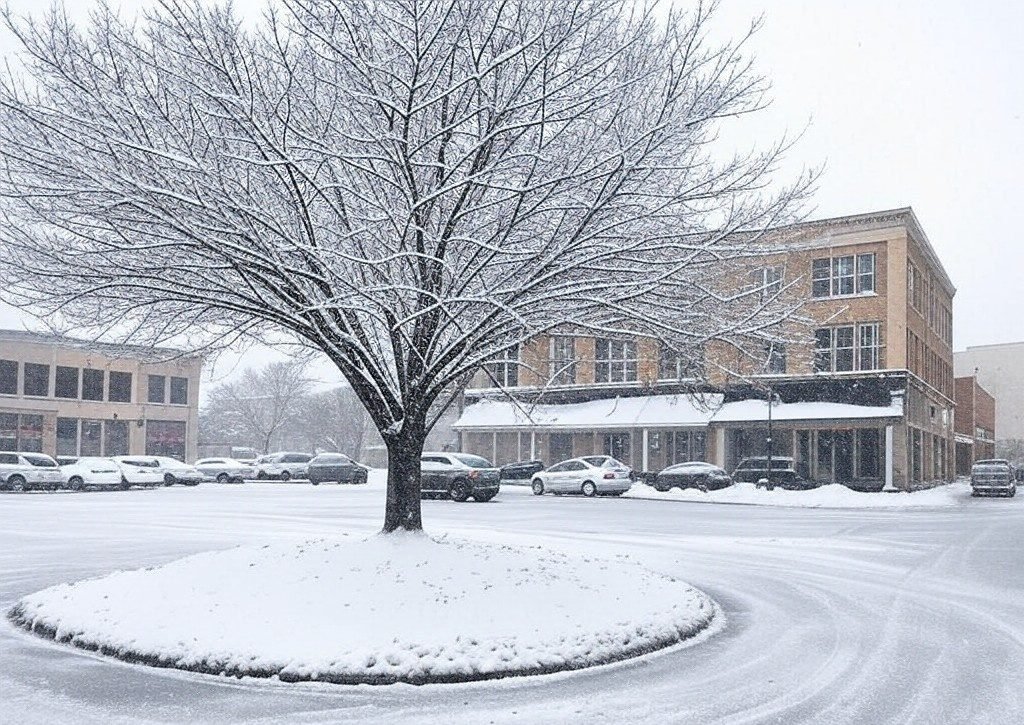Winter Storm Update: A Deep Dive into the Impact Across the Southern U.S.
As the winter season unfolds, the U.S. is witnessing a significant winter storm that has already caused considerable disruption in the Midwest and Mid-Atlantic regions. Following the aftermath of a deadly storm that recently swept through these areas, a new winter storm is now making its way across the southern states, bringing with it a mix of snow and ice. The National Weather Service has issued warnings and forecasts that suggest this storm will have a pronounced impact across states such as Oklahoma, Arkansas, and Texas, among others.
Current Weather Conditions and Forecast
According to the National Weather Service, the winter storm is progressing through parts of the southern United States from Friday through Saturday. Current forecasts indicate that areas in eastern Oklahoma, the Mid-South, and the southern Appalachian regions can expect to see between six to ten inches of snow. At least 40 million people were under a winter storm warning as of Thursday afternoon. The storm is set to create hazardous conditions, particularly along the Gulf Coast, which will be experiencing significant snowfall and ice accumulation.
As the storm moves northeastward, it is anticipated to weaken by Saturday. However, lighter snowfall amounts ranging from one to three inches are still expected across parts of the Northeast, the Mid-Atlantic, and the Ohio Valley before eventually exiting out towards the Carolinas. This variability in snowfall accumulation highlights the unpredictable nature of winter storms and the necessity of staying informed.
State-Specific Impacts
The effects of the winter storm will vary significantly from state to state across the southern U.S. Here’s a detailed look at the anticipated impacts:
- Tennessee: Residents can expect snow accumulation that could lead to dangerous travel conditions. Major highways may be affected, and local authorities are urging caution.
- Georgia: While Georgia doesn’t frequently see heavy snowfall, this storm could bring a rare wintery mix. Areas in northern Georgia might experience a light dusting of snow, which can still create hazardous road conditions.
- Texas: In Texas, particularly in the northern regions, the storm is predicted to bring several inches of snow, leading to school closures and travel advisories.
- Alabama: The state may see a combination of rain and snow, with some areas receiving ice. This poses a risk for power outages and treacherous roads.
- South Carolina: Snowfall is less common in South Carolina, but this storm could bring a light accumulation, especially in the northwest part of the state.
Preparation and Safety Tips
In light of the approaching winter storm, it is crucial for residents in affected areas to take necessary precautions. Here are some essential safety tips to consider:
- Stay Informed: Regularly check updates from local news outlets and the National Weather Service for the latest weather information and warnings.
- Travel Caution: If travel is necessary, ensure your vehicle is equipped for winter conditions. Keep an emergency kit, including blankets, food, water, and a flashlight.
- Home Preparations: Stock up on essentials like food, water, and medications. Ensure your heating system is functioning properly and consider having a backup heat source.
- Community Support: Check on neighbors, especially the elderly or those with disabilities, to ensure they are prepared and safe during the storm.
Historical Context of Winter Storms
This winter storm is part of a broader pattern of severe weather seen across the southern U.S. in recent years. Historical data indicates that winter storms can have devastating effects not only in terms of immediate safety hazards but also in terms of long-term economic impact. The U.S. experiences an average of 20 significant winter storms annually, which can disrupt daily life, affect infrastructure, and lead to costly repairs and emergency services.
Climate change has also played a role in the increasing frequency and intensity of these storms. Warmer air holds more moisture, leading to heavier precipitation in winter months. As temperatures fluctuate, the potential for both severe cold and winter storms becomes more pronounced, making it crucial for communities to develop robust response strategies.
Looking Ahead: The Future of Winter Weather
As meteorological technology advances, forecasts will become increasingly accurate, allowing for better preparedness ahead of winter storms. However, the unpredictability of weather patterns means that residents must remain vigilant and proactive in their safety measures. Community preparedness plans, enhanced infrastructure to handle snow and ice, and public awareness campaigns will be vital in mitigating the impact of future storms.
Conclusion
The winter storm currently affecting the southern U.S. serves as a stark reminder of nature’s power and unpredictability. With forecasts predicting significant snowfall and icy conditions across multiple states, it is essential for individuals and communities to take proactive steps in preparation. By staying informed, adhering to safety tips, and supporting one another, we can navigate the challenges posed by winter storms. As we look to the future, understanding the evolving patterns of winter weather will be crucial in fostering resilience against these formidable seasonal challenges.
Stay safe and warm, and make sure to keep up with the latest weather updates to protect yourself and your loved ones during this winter storm.






